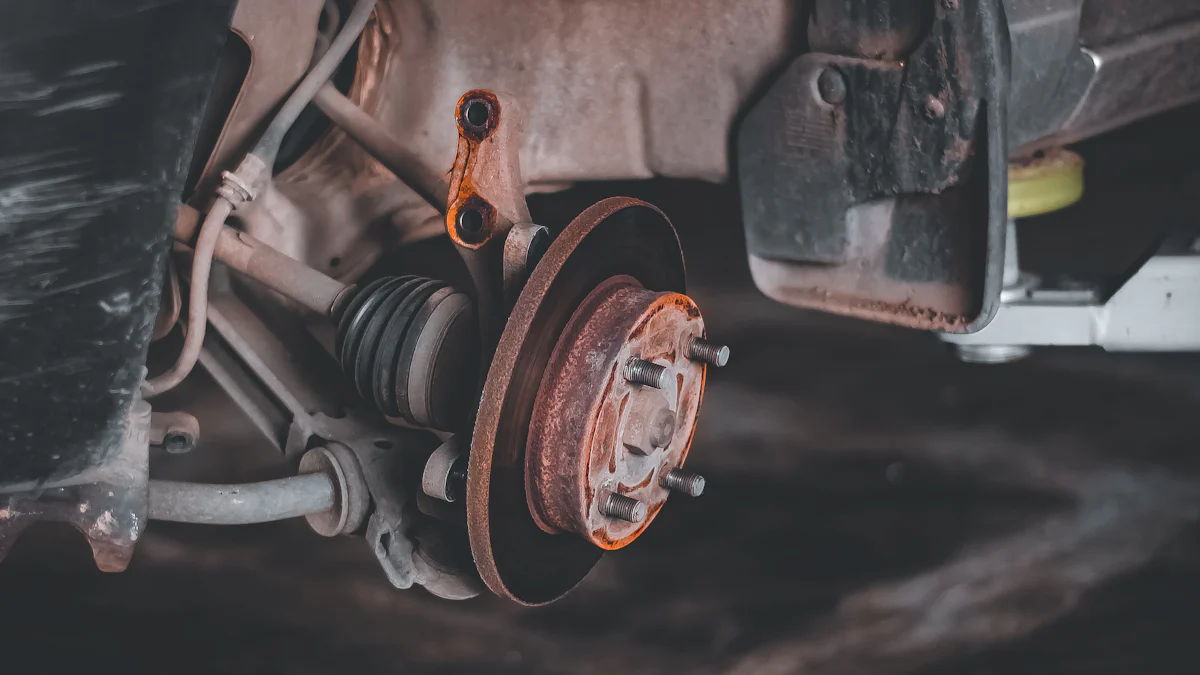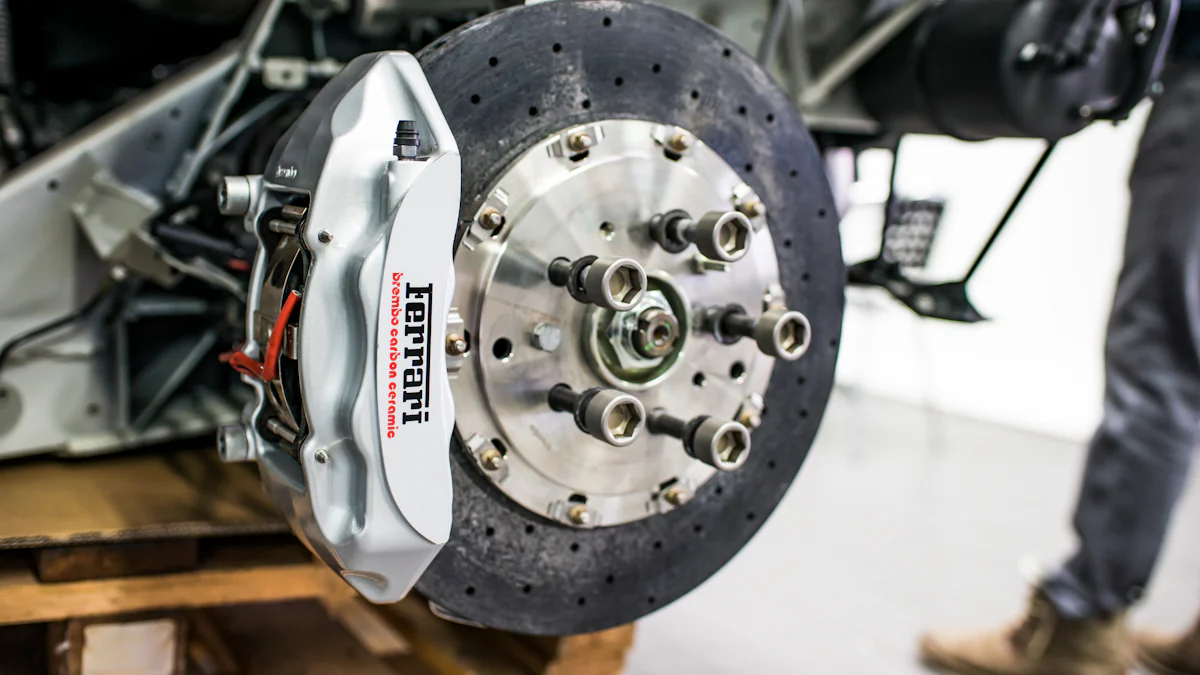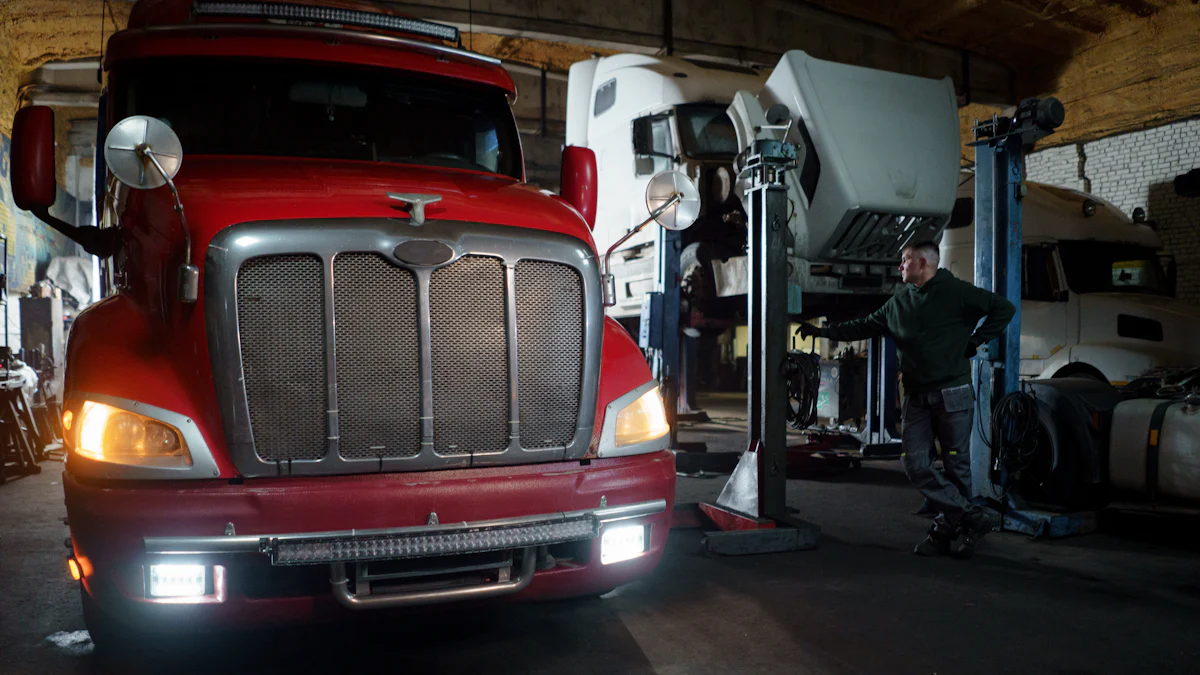
A brake chamber is a vital component of a truck’s air brake system. It helps you stop the vehicle by converting air pressure into mechanical force. When air enters the chamber, it pushes internal parts to activate the brakes. This process ensures your truck slows down or stops effectively, even under heavy loads.
Components of a Brake Chamber

Understanding the components of a brake chamber helps you grasp how it works. Each part plays a critical role in ensuring your truck’s braking system operates efficiently.
Diaphragm
The diaphragm is a flexible rubber membrane inside the brake chamber. It separates the air pressure side from the mechanical side. When air enters the chamber, the diaphragm moves, transferring force to other components. Its flexibility ensures smooth operation under varying pressure levels.
Push Rod
The push rod connects the diaphragm to the braking mechanism. As the diaphragm moves, the push rod transfers this motion to the slack adjuster, which then activates the brakes. This rod must remain strong and durable to handle repeated use without bending or breaking.
Return Spring
The return spring ensures the brake chamber resets after each use. Once you release the brake pedal, the spring pushes the diaphragm and push rod back to their original positions. This action prepares the system for the next braking cycle.
Clamp and Housing
The clamp and housing hold the brake chamber together. The housing protects internal components from dirt, moisture, and damage. The clamp ensures all parts stay securely in place, maintaining the chamber’s structural integrity.
Air Inlet Port
The air inlet port allows compressed air to enter the brake chamber. This port connects to the truck’s air brake system. It ensures the chamber receives the necessary air pressure to activate the diaphragm and push rod.
Each of these components works together to make the brake chamber a reliable part of your truck’s braking system.
How a Brake Chamber Works
Air supply and pressurization
The process begins when you press the brake pedal. This action sends compressed air from the truck’s air brake system into the brake chamber. The air enters through the air inlet port, creating pressure inside the chamber. This pressurization is the driving force behind the braking mechanism.
Diaphragm and push rod movement
As air pressure builds, it pushes against the diaphragm. The diaphragm, being flexible, moves forward. This movement transfers force to the push rod, which is directly connected to the braking system. The push rod then extends outward, initiating the next step in the braking process.
Conversion of air pressure to mechanical force
The brake chamber converts the air pressure into mechanical force through the diaphragm and push rod. This mechanical force is what activates the truck’s braking system. The conversion ensures that the air pressure you generate by pressing the pedal translates into the physical force needed to slow down or stop the vehicle.
Brake activation process
When the push rod moves, it engages the slack adjuster. The slack adjuster then rotates the camshaft, which applies the brake shoes against the brake drum. This friction slows the wheels and brings the truck to a stop. The entire process happens quickly, ensuring effective braking.
Brake release process
Releasing the brake pedal causes the air pressure inside the brake chamber to drop. The return spring pushes the diaphragm and push rod back to their original positions. This action disengages the brakes, allowing the wheels to move freely again. The system resets, ready for the next braking cycle.
Understanding how the brake chamber works helps you appreciate its role in ensuring your truck’s safety and performance.
Spring Brake Chambers for Parking and Emergencies

Differences between service and spring brake chambers
Service brake chambers handle regular braking by converting air pressure into mechanical force. Spring brake chambers, on the other hand, serve dual purposes. They assist with parking and emergency braking. The key difference lies in the spring mechanism inside spring brake chambers. This powerful spring remains compressed during normal operation. It activates when air pressure drops, ensuring the brakes engage even if the air system fails. You can think of service brake chambers as handling day-to-day braking, while spring brake chambers act as a safety net.
Spring mechanism in parking brakes
The spring inside a spring brake chamber plays a crucial role in parking brakes. When you park the truck, the air pressure in the chamber releases. This allows the spring to expand, pushing the push rod forward. This action locks the brakes in place, preventing the truck from rolling. To release the parking brake, you reintroduce air pressure into the chamber. This compresses the spring and disengages the brakes. The spring mechanism ensures your truck stays stationary, even on slopes or uneven terrain.
Emergency braking function
Spring brake chambers also provide emergency braking. If the air brake system loses pressure due to a leak or failure, the spring automatically activates. It pushes the push rod forward, engaging the brakes without any input from you. This feature ensures your truck can stop safely, even in critical situations. The spring mechanism acts as a fail-safe, giving you peace of mind during unexpected air system failures.
Spring brake chambers are essential for both parking and emergency braking. They add an extra layer of safety to your truck’s braking system.
A truck’s brake chamber plays a key role in converting air pressure into braking force. Its operation ensures safe and efficient stopping.
Regular maintenance keeps your brake chamber reliable. Inspect components like the diaphragm and push rod for wear. Address issues early to avoid failures.
By prioritizing upkeep, you enhance safety and extend your truck’s lifespan.
Post time: Jan-14-2025





